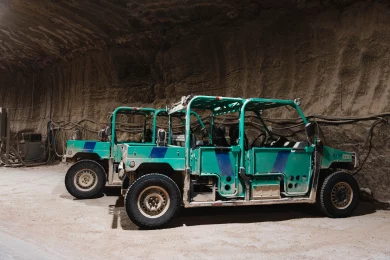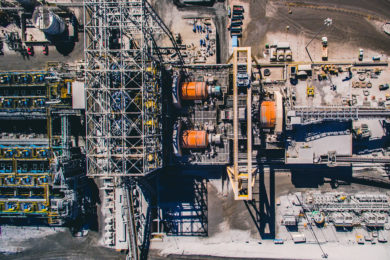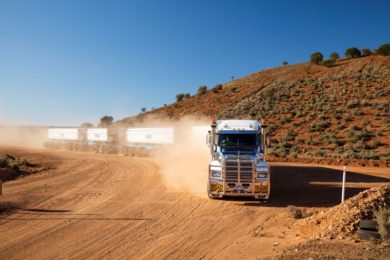 The Veolia Water Solutions & Technologies Brine Concentrator System at Energy Resources of Australia’s Ranger uranium mine in the Northern Territory of Australia recently began operations as part of ERA’s long-term water management strategy. The system will treat mine process water to produce 1,830 megalitres of clean water annually (1.3 Mgal/d). The project will play an integral part in the progressive rehabilitation activities at the mine. The system, based on HPD evaporation technology from Veolia, was delivered nearly three months earlier than scheduled through close collaboration between Veolia and ERA. An early delivery was important as ERA’s detailed water inventory modelling indicated a need for the capacity to treat large volumes of water. Despite the accelerated schedule, there were no safety incidents in the more than 700,000 man hours logged during equipment fabrication, construction, and system commissioning.
The Veolia Water Solutions & Technologies Brine Concentrator System at Energy Resources of Australia’s Ranger uranium mine in the Northern Territory of Australia recently began operations as part of ERA’s long-term water management strategy. The system will treat mine process water to produce 1,830 megalitres of clean water annually (1.3 Mgal/d). The project will play an integral part in the progressive rehabilitation activities at the mine. The system, based on HPD evaporation technology from Veolia, was delivered nearly three months earlier than scheduled through close collaboration between Veolia and ERA. An early delivery was important as ERA’s detailed water inventory modelling indicated a need for the capacity to treat large volumes of water. Despite the accelerated schedule, there were no safety incidents in the more than 700,000 man hours logged during equipment fabrication, construction, and system commissioning.
“The Brine Concentrator is a critical component of ERA’s future as the successful treatment of process water is key to rehabilitating the site and ensuring our water balances are in full control,” remarked ERA Chief Executive Rob Atkinson. “Without the Brine Concentrator I don’t believe ERA has a future.” Veolia’s industrial operating group in Australia lent their assistance in the early design stages of the Brine Concentrator and was subsequently awarded an interim operations and maintenance contract by ERA for the system. Early involvement of Veolia Australia’s operations team allowed an operator’s perspective to be incorporated into the design. The Veolia operations team also provided for a smooth transition from system checkout and commissioning to full operation while allowing ERA to focus their staff in other areas of the mine.
ERA Ranger, located 8 km east of Jabiru and 260 km east of Darwin is one of the world’s largest uranium producers and Australia’s longest continually operating uranium mine. Uranium has been mined at Ranger for three decades and it is one of only three mines in the world to produce in excess of 110,000 t of uranium oxide.








